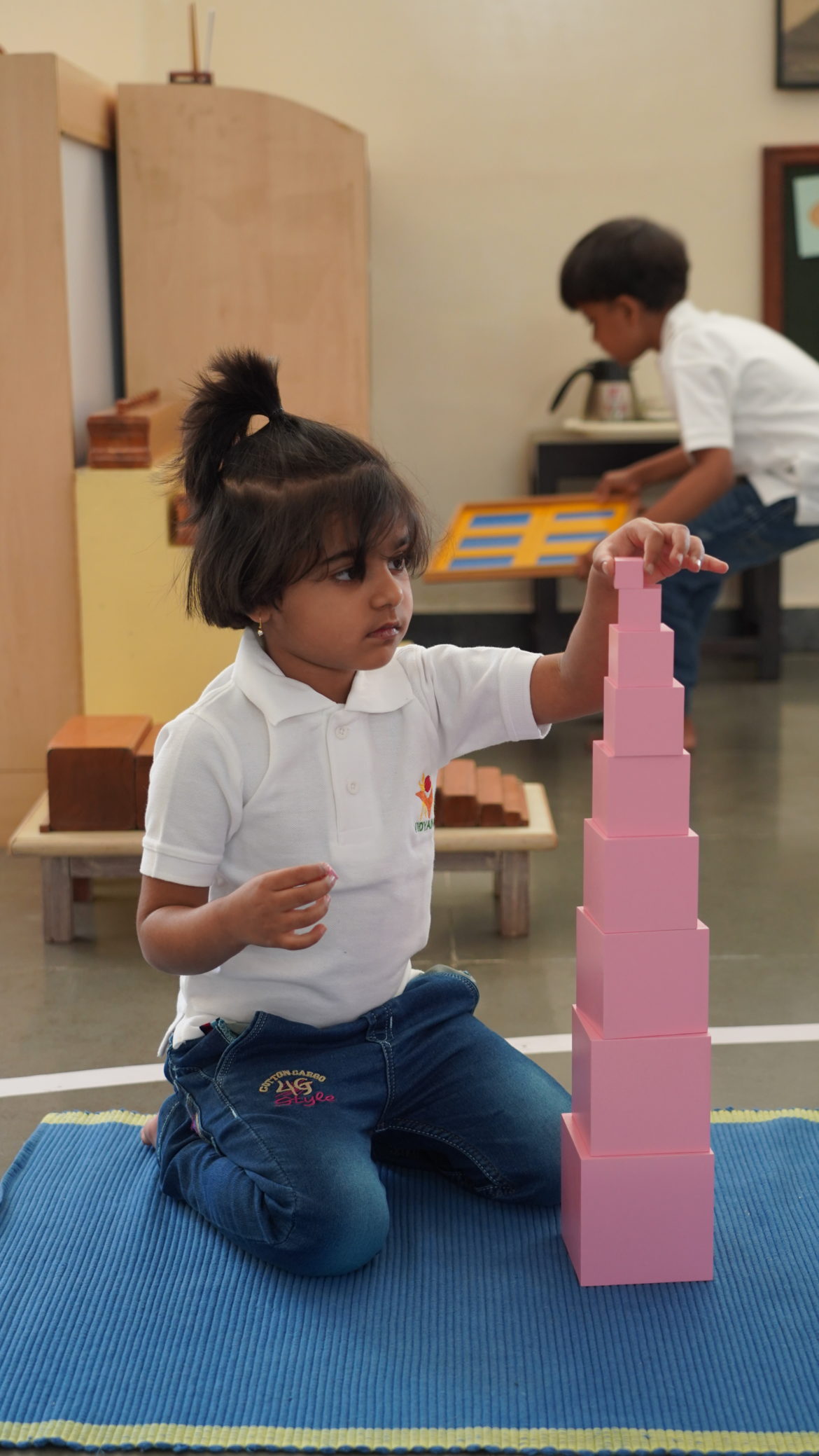Freedom and Discipline
The First thing we notice in a Montessori class is discipline. The 30 – 35 children in the Montessori classroom, moving busily minding their work without the teacher’s instruction.
As if directed by some external power, each one chooses his work, completes it, and goes to another. Although most materials are in a single set, we never see a child snatch material from another child.
Imagine what happens in the same situation at home, when there is one material and two children fighting for that single toy. How are the children so disciplined in the Montessori classroom?
The children in the Montessori classroom appear to be highly organized. They seem to have planned what to work with even before stepping into the Montessori classroom.
Not just the material what kind of groundwork they need to do before getting that material – whether to have a small mat, a big rug or a chowki. For instance: imagine a child has planned to work with Pink Tower.
He directly goes to the mat, gets the required mat, unrolls, and then goes to the place of display, only to find that another child has already taken the first cube of Pink Tower to his mat.
A parent observing this may feel sorry for the child and may even try providing another set of materials. Nevertheless, the trained teacher knows how to handle this situation and refrains from interfering.
Let us study the situation again. The child wants to work with a particular material. By the time he gets ready for it, it is chosen by some other child. Now the child has two options.
One, to choose some other material and work with it. Two, wait for the material until it gets returned to its place. Both these alternatives are challenging and require strong willpower. Yet, the child chooses one of these instead of snatching.
How is it possible in the Montessori class? To understand this possibility, we need to understand the freedom the child enjoys in the Montessori classroom.
According to Maria Montessori, both freedom and discipline are the two faces of the same coin, and one does not exist without the other. For instance, when we are very strict with a teenager and restrict him from going to the malls, theatres, tasting some foods or decide what he must wear.
He behaves accordingly as long as he is within our control. The moment he gets out of our sight, he will do what he wants. Hence, it is essential to give the children freedom and make them aware of its limits.
In the Montessori classroom, children enjoy freedom in addition to discipline. Freedom here doesn’t mean that children can do whatever they want. It is freedom within limits.
Every freedom the child enjoys has a boundary. We find four kinds of freedom in the Montessori classroom, but all these freedoms have their own limitations.
Freedom of speech is the first freedom that the children enjoy in the Montessori schools. The children have the freedom to speak whatever they like from Sharukh Khan to Pogo Channel and share about their grandparents to the puppy in the neighbourhood. The limitation of this freedom is the voice level. Talking softly!
The second freedom is about movement – children have the freedom to move anywhere in the Montessori school. Without seeking the teacher’s permission, they can even go to the outer environment provided they have a purpose for their movement.
When the child goes out of the classroom, there must be a reason for it. It could be raking the leaves, watering the plants, playing in the playground, mopping, or sweeping the outdoors, but there should be a reason. Without any reason, the children are not allowed to move around.
The third freedom is the children have the freedom to work with any material. The limitation is he should know how to work with that material, meaning he should have been presented with that material.
The fourth freedom is the child has the freedom to repeat an activity. However, once he takes the material, he must do the activity at least once and then put it back in its place in the way it was found.
Freedom and discipline both are essential for development. What happens if we pull out the plant from the ground to provide freedom to it? What happens if we free a butterfly from the imprisonment of pupa?
As a plant’s development is attached to the ground, the butterfly’s life flourishes being held in the pupa; discipline and freedom within limits are essential for children’s development.

